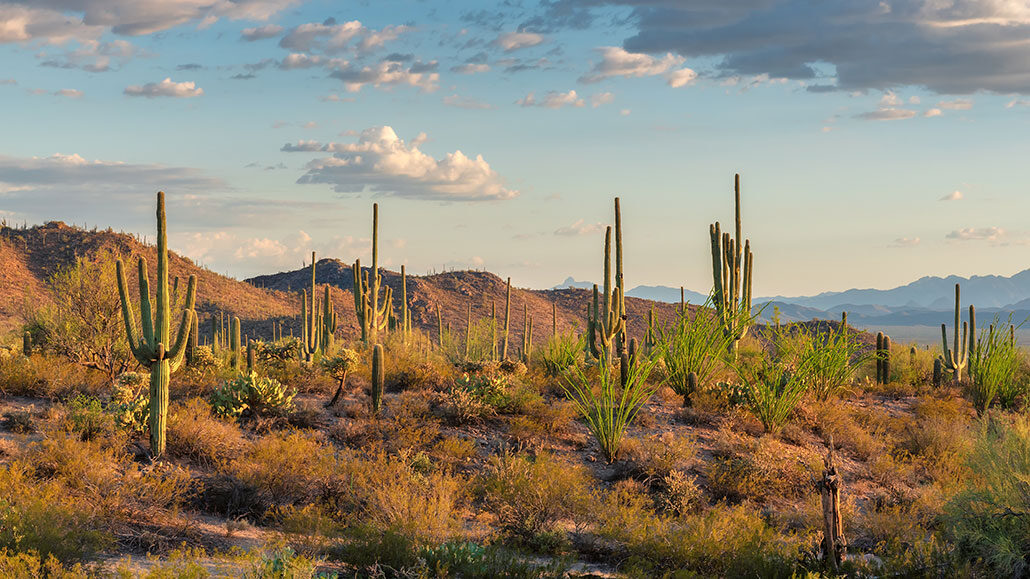adaptation: (in biology) A process by which an organism or species becomes better suited to its environment. When a community of organisms does this over time, scientists refer to the change as evolution.
Antarctica: A continent mostly covered in ice, which sits in the southernmost part of the world.
cactus: (plural, Cacti) A family of plants with thick, fleshy stems and scales or spines instead of leaves. Cacti can store water in their stems, and are found in dry areas such as deserts.
desert: A type of ecosystem characterized by very little precipitation. Deserts get less than 250 millimeters (10 inches) of water from the skype per year.
ecosystem: A group of interacting living organisms — including microorganisms, plants and animals — and their physical environment within a particular climate. Examples include tropical reefs, rainforests, alpine meadows and polar tundra. The term can also be applied to elements that make up some an artificial environment, such as a company, classroom or the internet.
fog: A thick cloud of water droplets that touches the ground.
lichen: A blend of a fungus and an alga. Neither of these organisms is a plant; the lichen isn't a plant either. S low-growing, lichens organisms live on the surface of rocks, trees or wood over many years. Lichens are a component of the soil crusts or “desert crusts” that cover the soil in some deserts .
organism: Any living thing, from elephants and plants to bacteria and other types of single-celled life.
precipitation: (in chemistry) The creation of a solid from a solution. This can occur if there is too much of a chemical to dissolve completely into a solution. It also can be a sign that some chemical reaction is taking place. (in meteorology) A term for water falling from the sky. It can be in any form, from rain and sleet to snow or hail.

